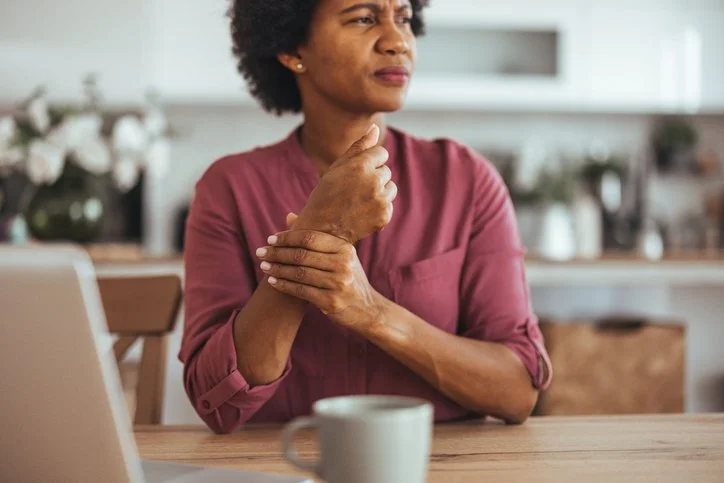Laser Therapy for Pain: What the Latest Research Says
If you’re navigating postpartum healing, managing chronic pain, or looking for safe, non-invasive ways to manage pain, you’ve likely heard about laser therapy - and for good reason.
Laser therapy is becoming an essential part of women’s health care for everything from nipple pain and perineal healing to sciatica, carpal tunnel, and back pain. But not all laser therapies are created equal, and that’s actually a good thing.
A new 2025 study compared two of the most widely used laser types - LLLT (Low-Level Laser Therapy) and HILT (High-Intensity Laser Therapy) - and the results reinforce what I already see in my practice.
Let’s break down what the research says - and how we apply it in our women-centered care.
What’s the Difference Between LLLT and HILT?
Think of LLLT as gentle and restorative, while HILT is more intense and deeper-reaching.
LLLT uses low-powered light to reduce inflammation, ease pain, and stimulate tissue repair - without generating any heat.
HILT delivers higher-powered light and includes a thermal component, allowing it to reach deeper tissues quickly and efficiently. It’s especially helpful when treating more persistent or nerve-related pain.
Both are effective. The difference lies in when, and how they’re used.
Wrist strain/Carpal Tunnel
When We Use LLLT (Low-Level Laser Therapy)
LLLT is best suited for healing sensitive or inflamed tissue. In our clinic, we use it for:
Nipple pain during breastfeeding. LLLT is gentle enough for the delicate skin around the nipple and areola, helping reduce pain and inflammation without discomfort.
Perineal healing after birth. Whether there were stitches or not, LLLT supports faster healing, reduces swelling, and eases discomfort in the postpartum period.
Cesarean scar recovery. Applied early, LLLT promotes better healing, reduces adhesions, and can help minimize scar discomfort.
Pelvic floor or vulvar pain. In cases of inflammation or trauma, LLLT helps reduce pain and promote tissue balance - especially helpful postpartum or during menopause.
LLLT is completely painless, requires no downtime, and is safe even in the immediate postpartum period.
Compare popular home, red light therapy devices for women here
When We Use HILT (High-Intensity Laser Therapy)
HILT is our go-to when we need to reach deeper structures or address more significant inflammation or nerve pain. We often recommend HILT for:
Carpal tunnel syndrome. Common during pregnancy and postpartum, HILT helps reduce swelling and relieve nerve compression without surgery or medication.
Sciatica and low back pain. Whether caused by pregnancy, postpartum strain, or long-standing issues, HILT provides fast, deep relief for nerve and muscular pain.
Chronic pelvic pain or SI joint dysfunction. When discomfort originates from deeper tissues, HILT supports muscle relaxation and improved blood flow, helping to break the pain-spasm cycle.
This therapy delivers more energy in less time and works quickly, making it ideal for busy women who need results without invasive interventions.
What the Research Shows
A recent network meta-analysis of 20 randomized controlled trials found that:
HILT was more effective than LLLT when used alone for musculoskeletal pain.
LLLT was still beneficial, especially when used as part of a broader care plan.
No adverse events were reported in any of the studies, underscoring the safety of both treatments - even when used frequently or on sensitive areas
That’s a significant advantage, especially when compared to pain medications or invasive procedures that can carry side effects or complications.
What This Means for Your Care
At our clinic, we don’t take a one-size-fits-all approach.
We use both LLLT and HILT, depending on your symptoms, your stage of healing, and your specific goals we tailor your treatment using the best evidence available.
Laser therapy is just one part of a holistic approach to women’s health. But it’s an incredibly powerful tool—especially when used by providers who understand the unique needs of the female body.
Considering Laser Therapy?
If you’re curious whether laser therapy could help you recover, heal, or simply feel more like yourself again, we’re here to answer your questions.
With the right tools, evidence-based care, and a compassionate team, we’ll help you get back to living with more ease.
Tracy

